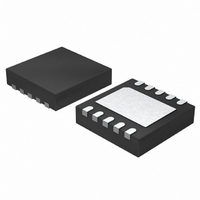LTC2484CDD#PBF Linear Technology, LTC2484CDD#PBF Datasheet - Page 39

LTC2484CDD#PBF
Manufacturer Part Number
LTC2484CDD#PBF
Description
IC ADC 24BIT 10-DFN
Manufacturer
Linear Technology
Datasheet
1.LTC2484CDDTRPBF.pdf
(42 pages)
Specifications of LTC2484CDD#PBF
Number Of Bits
24
Sampling Rate (per Second)
6.8
Data Interface
MICROWIRE™, Serial, SPI™
Number Of Converters
1
Power Dissipation (max)
480µW
Voltage Supply Source
Single Supply
Operating Temperature
0°C ~ 70°C
Mounting Type
Surface Mount
Package / Case
10-WFDFN Exposed Pad
Number Of Elements
1
Resolution
24Bit
Architecture
Delta-Sigma
Sample Rate
0.0075KSPS
Input Polarity
Bipolar
Input Type
Voltage
Rated Input Volt
±2.75V
Differential Input
Yes
Power Supply Requirement
Single
Single Supply Voltage (typ)
3.3/5V
Single Supply Voltage (min)
2.7V
Single Supply Voltage (max)
5.5V
Dual Supply Voltage (typ)
Not RequiredV
Dual Supply Voltage (min)
Not RequiredV
Dual Supply Voltage (max)
Not RequiredV
Integral Nonlinearity Error
10ppm of Vref
Operating Temp Range
0C to 70C
Operating Temperature Classification
Commercial
Mounting
Surface Mount
Pin Count
10
Package Type
DFN EP
Input Signal Type
Differential
Lead Free Status / RoHS Status
Lead free / RoHS Compliant
Available stocks
Company
Part Number
Manufacturer
Quantity
Price
APPLICATIONS INFORMATION
/*** read _ LTC2484() ************************************************************
This is the function that actually does all the work of talking to the LTC2484.
The spi _ read() function performs an 8 bit bidirectional transfer on the SPI bus.
Data changes state on falling clock edges and is valid on rising edges, as
determined by the setup _ spi() line in the initialize() function.
A good starting point when porting to other processors is to write your own
spi _ write function. Note that each processor has its own way of configuring
the SPI port, and different compilers may or may not have built-in functions
for the SPI port. Also, since the state of the LTC2484’s SDO line indicates
when a conversion is complete you need to be able to read the state of this line
through the processor’s serial data input. Most processors will let you read
this pin as if it were a general purpose I/O line, but there may be some that
don’t.
When in doubt, you can always write a “bit bang” function for troubleshooting
purposes.
The “fourbytes” structure allows byte access to the 32 bit return value:
struct fourbytes
Also note that the lower 4 bits are the configuration word from the previous
conversion. The 4 LSBs are cleared so that
they don’t affect any subsequent mathematical operations. While you can do a
right shift by 4, there is no point if you are going to convert to floating point
numbers - just adjust your scaling constants appropriately.
*******************************************************************************/
signed int32 read _ LTC2484(char config)
// Now is the time to switch any multiplexers because the conversion is finished
// and you have the whole data output time for things to settle.
// Clear configuration bits and subtract offset. This results in
// a 2’s complement 32 bit integer with the LTC2484’s MSB in the 2^20 position
{
int8 te0;
int8 te1;
int8 te2;
int8 te3;
};
{
union
output _ low(CS);
while(input(PIN _ C4)) {}
adc _ code.by.te3 = 0;
adc _ code.by.te2 = spi _ read(config);
adc _ code.by.te1 = spi _ read(0);
adc _ code.by.te0 = spi _ read(0);
output _ high(CS);
adc _ code.by.te0 = adc _ code.by.te0 & 0xF0;
adc _ code.bits32 = adc _ code.bits32 - 0x00200000;
return adc _ code.bits32;
} // End of read _ LTC2484()
{
signed int32 bits32;
struct fourbytes by;
} adc _ code;
//
// The make32() function in this compiler will
// also work, but a union of 4 bytes and a 32 bit int
// is probably more portable.
// Define structure of four consecutive bytes
// To allow byte access to a 32 bit int or float.
// adc _ code.by.te1
// Wait for end of conversion. The longest
// adc _ code.by.te2
// adc _ code.bits32
// adc _ code.by.te0
// Enable LTC2484 SPI interface
// you will ever wait is one whole conversion period
// adc _ code.by.te3
// Set upper byte to zero.
// to act as SPI master!! (compiler
// and processor specific.)
// Disable LTC2484 SPI interface
// Read first byte, send config byte
// Read 2nd byte, send speed bit
// Read 3rd byte. ‘0’ argument is necessary
byte 1
byte 2
byte 0
all 32 bits
byte 3
LTC2484
39
2484fc













